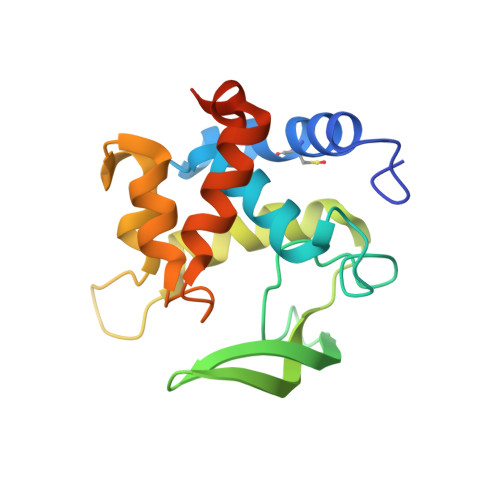Molecular basis for substrate recognition and septum cleavage by AtlA, the major N-acetylglucosaminidase of Enterococcus faecalis.
Roig-Zamboni, V., Barelier, S., Dixon, R., Galley, N.F., Ghanem, A., Nguyen, Q.P., Cahuzac, H., Salamaga, B., Davis, P.J., Bourne, Y., Mesnage, S., Vincent, F.(2022) J Biological Chem 298: 101915-101915
- PubMed: 35398351
- DOI: https://doi.org/10.1016/j.jbc.2022.101915
- Primary Citation of Related Structures:
7QFU - PubMed Abstract:
The cleavage of septal peptidoglycan at the end of cell division facilitates the separation of the two daughter cells. The hydrolases involved in this process (called autolysins) are potentially lethal enzymes that can cause cell death; their activity, therefore, must be tightly controlled during cell growth. In Enterococcus faecalis, the N-acetylglucosaminidase AtlA plays a predominant role in cell separation. atlA mutants form long cell chains and are significantly less virulent in the zebrafish model of infection. The attenuated virulence of atlA mutants is underpinned by a limited dissemination of bacterial chains in the host organism and a more efficient uptake by phagocytes that clear the infection. AtlA has structural homologs in other important pathogens, such as Listeria monocytogenes and Salmonella typhimurium, and therefore represents an attractive model to design new inhibitors of bacterial pathogenesis. Here, we provide a 1.45 Å crystal structure of the E. faecalis AtlA catalytic domain that reveals a closed conformation of a conserved β-hairpin and a complex network of hydrogen bonds that bring two catalytic residues to the ideal distance for an inverting mechanism. Based on the model of the AtlA-substrate complex, we identify key residues critical for substrate recognition and septum cleavage during bacterial growth. We propose that this work will provide useful information for the rational design of specific inhibitors targeting this enterococcal virulence factor and its orthologs in other pathogens.
- CNRS, Aix Marseille University, AFMB, Marseille, France.
Organizational Affiliation:


















